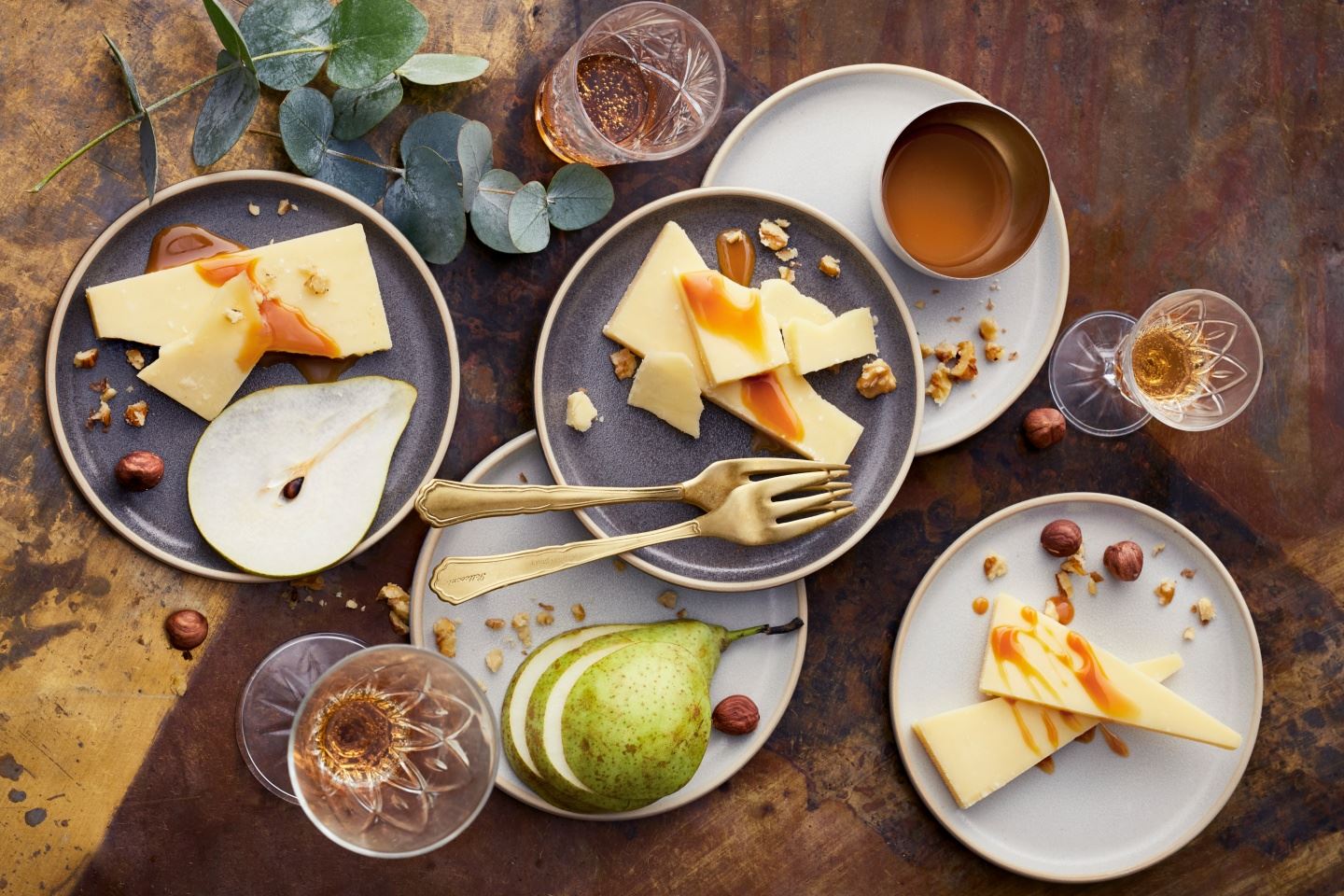What gives a cheese its taste?

Developing a cheese’s taste requires the finest expertise and skill. How, then, are cheese flavours developed and how are they studied? Where does the taste of cheese and all its variation come from?
Taste is chemistry
Product developers for Valio cheese describe cheese flavours in a simple manner: taste is chemistry! The flavours of cheeses are born in fat, protein and carbohydrates that the culture bacteria use to create flavour compounds. It could be said that you can’t make a hard cheese without culture, and culture plays a significant role in creating the taste. Developing the right kind of good taste is not simple.
Tasting requires expertise
If taste is chemistry, tasting is a skill. It could be said that tasting is a physical skill as much as riding a bicycle. You have to practice to learn, and some come to it easier than others. Naturally, genetics play a hand in addition to learning, as some people simply have more accurate senses of taste. This, particularly, has to do with bitter flavours. That is not to say that you have to have good genetics to be a professional taster, and it can be simply said that edam must taste of edam, and emmental must taste of emmental. Identifying them is vital. There are hundreds, if not thousands of flavour compounds, and practice with tastes is where a professional’s expertise lies.
In studying the flavour dictionary for cheeses, you find out what this really means: in addition to the traditional saltiness, bitterness or creaminess, nearly every primary flavour has been divided into smaller, individual flavours. Developing the cheese flavour dictionary is one of the cheese product development projects, which is actively worked on. In doing so, we aim to make taste assessments as unified as possible, and a particular type of flavour is always referred to with a specific term. Fruitiness covers flavour profiles such as flowery, citrusy, apple-flavoured and blackcurrant-flavoured; earthy flavours include cellar-like, leathery, and putty-like.



“Before, one test may have needed at least 500 litres of milk and now, the smallest possible batch can be made from one litre of milk.”




